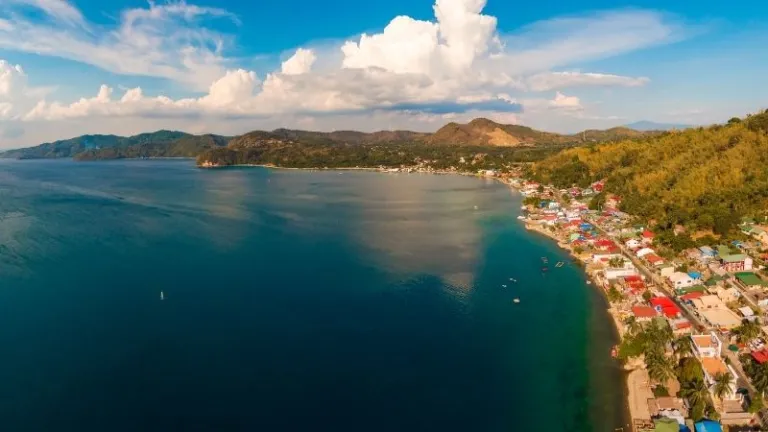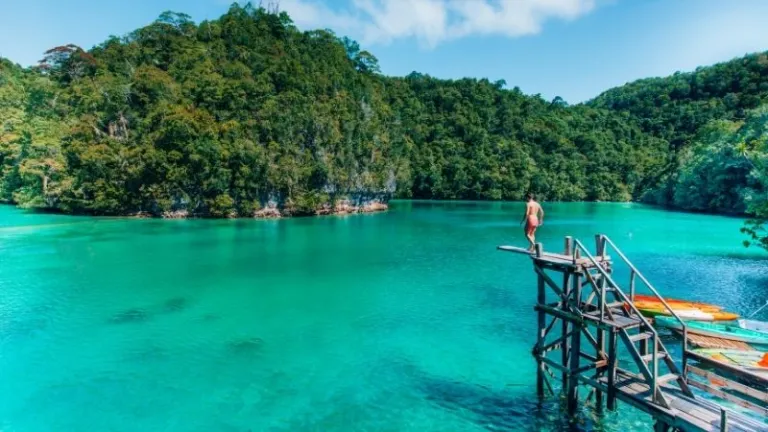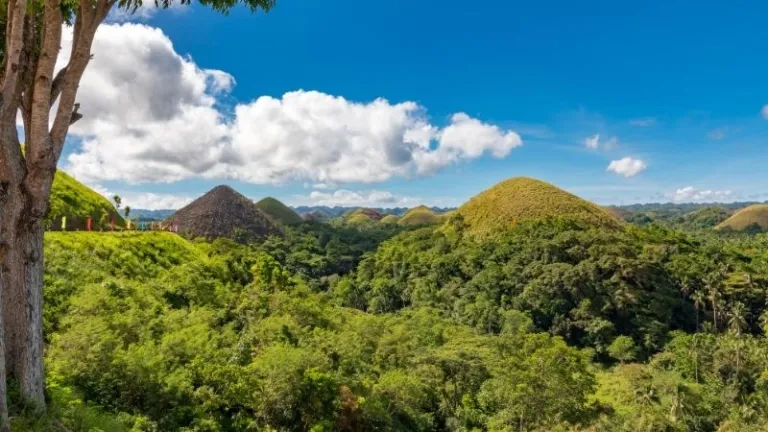Our favourite places to stay on this sleepy Cebu island.
COVID-19 Philippines Travel Advisory for Filipinos & Foreign Visitors
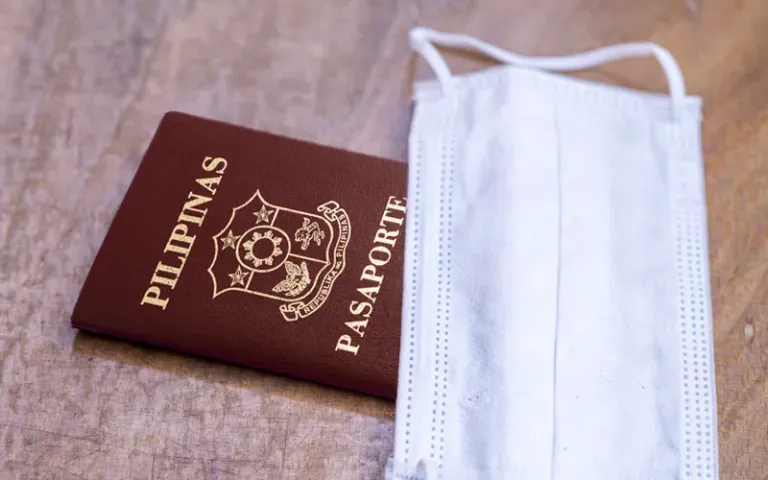
This COVID-19 Philippines travel advisory was last updated on 28 Jan 2021.
As COVID-19 lockdown measures in the Philippines are constantly being updated, travel guidelines are constantly changing along with them. This leaves us with so many questions:
- What is the travel situation in the Philippines like during the COVID-19 pandemic?
- Who is eligible for travel?
- What are the protocols for inbound and outbound travel?
- Which places in the Philippines are open for tourism?
- How are airlines operating at the moment?
- What are the important things we should keep in mind when travelling amid the pandemic?
To answer all these questions and more, TripZilla Philippines has put together this COVID-19 Philippines travel advisory detailing the latest travel protocols and restrictions in the country. This article will continue to be updated with the latest information on travel in the Philippines during the pandemic.
COVID-19 Philippines Travel Advisory: Important details to note
Overview of the COVID-19 travel situation in the Philippines
At the time of writing, travel to and from the Philippines is still limited to essential purposes. Meanwhile, domestic tourism is gradually reopening in destinations with zero to little COVID-19 cases; on the other hand, borders will remain closed to international tourists until mid-2021, according to the Department of Tourism (DOT).
Also read: Slowly But Surely: Here’s What Tourism Reopening Looks Like in The Philippines
Different parts of the country still remain in varying levels of quarantine. Below are the different levels of quarantine, and what forms of travel are allowed under each.
Quarantine levels in the Philippines: Travel restrictions & who can travel
Enhanced Community Quarantine (ECQ)
- No domestic flights
- Limited international flights
- Public transportation not allowed
Who are allowed to travel during ECQ?
- Health and emergency frontline service personnel
- Government officials and frontline personnel
- Humanitarian assistance actors (HAA) with authorisation
- Persons travelling for medical/humanitarian reasons
- Persons going to the airport for travel abroad
- Repatriated Overseas Filipino Workers (OFW) and Overseas Filipinos (OF) returning to their residence
- Other persons transported through the efforts of the national government
- Priests, Pastors, Imams, or other religious ministers conducting necrological services
- Immediate family members of deceased (from non-COVID causes) attending the wake
- Individuals who are working on veterinary clinics
- Individuals who are working as security personnel in operational industries
- Persons who will report to work for industries that are allowed to operate
- Persons who need emergency medical aid or assistance
- Persons with quarantine passes who will get essentials like food and medicine
Modified Enhanced Community Quarantine (MECQ)
- No domestic flights
- Limited international flights
- Controlled inbound travel (OFWs, returning Filipinos)
- Biking and non-motorised transport encouraged
- Public transportation not allowed
Who are allowed to travel during MECQ?
- Same as ECQ
General Community Quarantine (GCQ)
- Public transportation allowed with strict health protocols in place
- Inter-island travel allowed between GCQ or MGCQ areas, with strict safety protocols
Who are allowed to travel during GCQ?
- Health and emergency frontline service personnel
- Government officials and frontline personnel
- Humanitarian assistance actors (HAA) with authorisation
- Persons travelling for medical/humanitarian reasons
- Persons going to the airport for travel abroad
- Repatriated Overseas Filipino Workers (OFW) and Overseas Filipinos (OF) returning to their residence
- Other persons transported through the efforts of the national government
- Priests, Pastors, Imams, or other religious ministers conducting necrological services
- Immediate family members of the deceased (from non-COVID causes) attending the wake
- Individuals who are working on veterinary clinics
- Individuals who are working as security personnel in operational industries
- Persons who will report to work for industries that are allowed to operate
- Persons who need emergency medical aid or assistance
- Persons who will get or buy essentials like food and medicine
- People travelling within the country with a secured Travel Authority document
- Individuals attending important gatherings with 10 or less people
- Individuals travelling to places under GCQ or MGCQ
- Students going to school once face-to-face classes are allowed
Modified General Community Quarantine (MGCQ)
- Public transportation allowed with strict health protocols in place
- Inter-island travel allowed between GCQ or MGCQ areas, with strict safety protocols
- Resumption of all flights with health protocols enforced
Who are allowed to travel during MGCQ?
- Same as GCQ
Areas under different quarantine levels as of 1 to 31 Jan 2021
- GCQ
- Metro Manila
- Isabela
- Santiago City
- Batangas
- Iloilo
- Tacloban City
- Iligan City
- Davao City
- Davao del Norte
- MGCQ
- Rest of the country
Minimum health standards
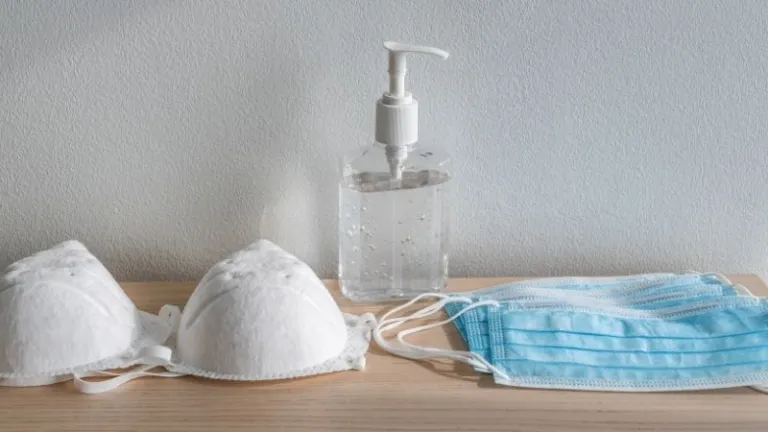
When in public areas, everyone is advised to comply with minimum health standards. The Department of Health has made the following practises mandatory:
- Wearing of face masks and other personal protective equipment at all times, except when eating or drinking
- Wearing of face shields in public transportation and other commercial establishments
- Physical distancing of at least one metre
- Temperature scanning before entering establishments
- Frequent hand washing or sanitising
Also read: Face Shields Now Required in Public Transport & Commercial Establishments
Is inbound travel allowed in the Philippines during the pandemic?
Yes, inbound travel is permitted — however, incoming international flights to the Philippines are limited to essential purposes only.
Who are not allowed to enter the Philippines?
Due to a rise in detected cases of the SARS-COV-2 (B117) variant, a travel ban has been imposed on selected countries. According to the Bureau of Immigration, those coming from or who have been to the following travel-restricted countries (with immigration admission and not a mere airport lay-over), except for Filipinos, within 14 days immediately preceding arrival shall not be allowed entry until 31 Jan 2021:
- United Kingdom of Great Britain
- Ireland
- Japan
- Australia
- Israel
- Netherlands
- Hong Kong, SAR
- Switzerland
- France
- Germany
- Iceland
- Italy
- Lebanon
- Singapore
- Sweden
- South Korea
- South Africa
- Canada
- Spain
- Denmark
- United States of America
- Portugal
- India
- Finland
- Norway
- Jordan
- Brazil
- China
- Pakistan
- Jamaica
- Luxembourg
- Oman
- Czech Republic
Arriving Filipino nationals shall be allowed entry, but will be subject to RT-PCR test, quarantine, and isolation protocols issued by the DOH:
- Those coming from the listed countries will be required to undergo an absolute facility-based 14-day quarantine period notwithstanding a negative RT-PCR test result.
- Filipino citizens who merely transited through the listed countries (provided they did not leave the airport and were not cleared for entry into the country by its immigration authorities) need not complete a full 14-day facility-based quarantine. They may be allowed home quarantine upon receiving a negative RT-PCR result at the point of entry, pursuant to the national government’s existing protocols.
Note: According to the Bureau of Immigration, the above prohibition to enter the Philippines shall apply to ALL foreigners regardless of visa category (including 9E visa) or previously issued endorsement or exemption from the DFA/privileges (under RA6768 – Balikbayan) during the duration of travel restriction.
Who are eligible for inbound travel?
According to the Bureau of Immigration, the following are eligible:
- Filipino nationals
- Foreign spouse and minor children of Filipinos*◇
- Children with special needs (regardless of age) of Filipinos*◇
- Foreign parent of minor Filipinos*◇
- Foreign parent of Filipino children with special needs (regardless of age)*◇
- Accredited foreign government and international organisation officials and their dependents*
- Foreign airline crew members
- Non-Filipino/foreign seafarers with 9(c) visa*
- Non-Filipino/foreign nationals with the following long-term visas*:
- Section 13 series of Commonwealth Act No. 613, as amended
- 13 Quota 13(a), 13(b), 13(c), 13(d), 13(e), 13(g) visas
- RA 7919 visa
- EO 324 visa
- Native Born visa
- Temporary Resident Visa relative to Section 13 of CA 613, as amended (based on Memorandum Order No. ADD-01-038/ADD 02-015)
- MCL-07-021 Permanent Resident Visa based on Section 13(a) of CA 613 under MO No. MCL-07-021
- EO 226 visa
- 47(a) 2 visa
- Section 13 series of Commonwealth Act No. 613, as amended
- Foreign nationals with visas issued by the following economic zones:*
- Aurora Pacific Economic Zone (APECO)
- Subic Bay Metropolitan Authority (SBMA)
* Upon compliance with the four IATF conditions.
◇ Those without an existing valid visa (even those who previously enjoyed visa-free privileges) must apply for an entry visa at the nearest Philippine Foreign Service Post.
Also read: MIAA Sets New International Travel Guidelines in the Philippines
What are the requirements for returning Filipinos?
The Bureau of Immigration lists the following for returning Filipino travellers starting 1 Feb 2021:
- Philippine passport
- Proof of citizenship
- Pre-booked quarantine hotel accredited by Tourism and Health agencies
- RT-PCR/swab test on fifth day upon arriving in the Philippines (at traveller’s expense)
What are the requirements for non-Filipino travellers?
In compliance with the directives from Malacañang as recommended by the Inter-Agency Task Force on Emerging Infectious Diseases (IATF-EID), the Bureau of Immigration lists the following conditions for non-Filipino travellers arriving in the Philippines. These will be made effective starting 1 Feb 2021:
- Must have a valid and existing visa at the time of entry
- With pre-booked accredited quarantine facility
- With pre-booked COVID-19 testing provider, test to be taken on fifth day upon arriving in the Philippines
- Subject to the maximum capacity of inbound passengers as set by the National Task Force for COVID-19
Also read: 5-Day Facility Quarantine Required for All Inbound Travellers Beginning February
What are the protocols for non-OFWS arriving in the Philippines?

Before your flight
- Fill up a Declaration and Waiver form indicating that you are healthy and fit to travel.
- For your mandatory hotel quarantine, pre-book your stay at a Department of Tourism (DOT)-accredited hotel.
- If the option is available, check in for your flight online.
- Accomplish the Electronic Health Locator Form and Arrival Card online, then save the QR code.
Also read: Here’s Why Returning OFWs & Non-OFWs Should Pre-Book This Hotel as Their Quarantine Facility
Upon arrival
- Attend a mandatory briefing by the Philippine Coast Guard.
- Fill up the Affidavit of Undertaking.
- Fill up the e-CIF form, then present your passport and QR code to the verification and barcoding booth.
- Pay for your RT-PCR test (₱4,500). You will be given three barcode stickers.
- Proceed to the testing booth, submit your three barcode stickers, and undergo your RT-PCR test.
- At Immigration, present the QR code you received after filling out the Health Locator Form and Arrival Card.
- Before exiting the airport, submit the Affidavit of Undertaking.
- Claim your baggage and clear with customs.
- Proceed to your booked hotel for mandatory quarantine while waiting for your RT-PCR test results. Negative test results will be sent to the email address you provided when you registered.
- If you test positive, the Bureau of Quarantine (BOQ) will transfer you to a designated hospital. If you test negative, you can claim your BOQ medical certificate for clearance via the Department of Health (DOH)-BOQ certificate page and proceed home, or pre-register and secure the necessary documents for your connecting flight.
- Once you get home, complete your 14-day quarantine.
Also read: My COVID-19 Repatriation: Steps for Non-OFWs Travelling Back to the PH
What are the protocols for OFWS arriving in the Philippines?
Before your flight
- Accomplish the Electronic Health Locator Form as early as three days before your flight, then save the QR code.
- Land-based OFWs must create or update their accounts on the OFW Assistance Information System (OASIS) here.
- If the option is available, check in for your flight online.
- Fill up a Declaration and Waiver form indicating that you are healthy and fit to travel.
- After check-in, accomplish the Arrival Card online, save the QR code.
Upon arrival
- Attend a mandatory briefing by the Philippine Coast Guard.
- Fill up the Project Care Slip.
- Fill up the e-CIF form, then present your passport and QR code to the verification and barcoding booth.
- You will be given six barcode stickers. One will be placed at the back of your passport.
- Proceed to the RT-PCR testing booth, and submit your five remaining barcode stickers. Then, undergo your RT-PCR test for free.
- At Immigration, present the QR code you received after filling out the Health Locator Form and Arrival Card.
- Proceed to the appropriate desk to receive your quarantine hotel assignment:
- For land-based OFWs, proceed to the Overseas Workers Welfare Administration (OWWA) desk. Present the e-CIF QR code and Project Care Slip.
- For sea-based OFWs, proceed to the Maritime Industry Authority (MARINA) desk.
- Claim your baggage and clear with customs.
- Exit the terminal and wait for your designated shuttle bus in order to proceed to your booked hotel for mandatory quarantine.
- Check in at your hotel and wait for your RT-PCR test results, which will be sent by the Philippine Red Cross to the email address you provided when you registered.
- If you test positive, the BOQ will transfer you to a designated hospital. If you test negative, you may present your test result and medical certificate for clearance.
- Once cleared, you may coordinate pickup. For further transportation needs after your final point of arrival:
- Land-based OFWs may coordinate with OWWA, or the OWWA Uwian Na portal
- Sea-based OFWs may coordinate with your Local Manning Agency (LMA)
- Once you get home, complete your 14-day quarantine.
Also read: Why You Should Self-Quarantine After Travelling Amid the COVID-19 Pandemic
Is outbound travel allowed in the Philippines during the pandemic?
Yes, outbound travel is allowed, however, it is still limited to essential purposes. Filipinos may leave the country for business, work, medical, emergency, and other humanitarian reasons, and must present the necessary supporting documents. Outbound travel is also permitted to foreigners who have been stranded due to the ongoing pandemic.
Based on a statement released on 6 Oct 2020, the ban on non-essential outbound travel will be lifted on 21 Oct.
Who are eligible for outbound travel?
According to the Bureau of Immigration, the following are eligible:
- Foreign nationals
- Overseas Filipino workers*
- Permanent visa holders*
- Students enrolled abroad and participants accepted in exchange visitor programs*
* Does not apply to destinations with existing travel restrictions.
Which countries are currently allowing the entry of Filipino travellers?
As of 2 Nov 2020, 54 countries have lifted their inbound restrictions on Philippine passport holders. In addition, seven countries and areas allow entry without any inbound restrictions. Below is a list of countries released by the Department of Foreign Affairs:
Countries/areas allowing entry without inbound restrictions
- Haiti
- Mexico
- Andorra
- Montenegro
- North Macedonia
- Serbia
- Zambia
Countries/areas which allow entry subject to medical protocols such as testing and quarantine requirements upon arrival, as well as flight availability
- Antigua and Barbuda
- Bahamas
- Barbados
- Brazil
- Dominican Republic
- Ecuador
- Guam
- Hawaii
- Jamaica
- Saint Lucia
- United States of America
- Afghanistan
- Bangladesh
- Cambodia
- French Polynesia
- Kiribati
- Laos
- Maldives
- Micronesia
- Mongolia
- Nauru
- Pakistan
- Papua New Guinea
- Azerbaijan
- Belarius
- Croatia
- Turkey
- Ukraine
- United Kingdom
- Benin
- Burkina Faso
- Chad
- Cote D’Ivoire
- Dijibouti
- Igyt
- Eswatini
- Ethiopia
- Guinea-Bissau
- Iran
- Kenya
- Lesotho
- Malawi
- Mozambique
- Niger
- Nigeria
- Gwanda
- Senegal
- Somalia
- South Africa
- Sudan
- Tanzania
- Uganda
- United Arab Emirates
What are the protocols and requirements for outbound travellers?
Outbound travellers must follow the required minimum health standards, as well as undergo mandatory temperature screening upon arrival at the airport. They are also reminded to make sure to take note of protocols for arriving passengers at their respective destinations.
A number of Asian countries now require Filipino passengers to present a valid negative PCR certificate before they may qualify to board a flight. The Metro Manila International Airport Authority (MIAA) lists the following countries:
- Abu Dhabi
- China
- Dubai
- Hong Kong
- Japan (with special exceptions)
- Qatar
- South Korea
- Taiwan
Effective 23 Oct 2020, the following will be required for outbound Filipinos (including those outbound for non-essential travel), according to the Bureau of Immigration:
- Confirmed round-trip tickets
- Travel and health insurance to cover travel disruptions and hospitalisation in case of COVID-19 infections during their allowable period of stay abroad
- BI Declaration of acknowledging the risks involved in travelling, including risk of delay in their return trip
*For those travelling on tourist or short-term/visitor visas:
- Negative COVID-19 test should be prepared if required by country of destination.
- Upon return, they shall follow the guidelines of the National Task Force for Returning Overseas Filipinos,
Starting 28 Nov 2020, all outbound travellers must have an account on the TRAZE Contact Tracing App prior to entering the airport. Steps on how to register are as follows:
- Download the TRAZE app fro your mobile store and install it on your phone.
- Open the app and click on the ‘Register’ button.
- Register as ‘Individual.’
- Follow the indicated instructions and input the necessary information.
- Activate your account.
Passengers who do not have mobile phones may go to the Malasakit Helpdesk at the airport, where they will be provided the necessary assistance for getting a unique QR code. Alternatively, they may also ask a family member to register for them.
For more information, you may visit Ninoy Aquino International Airport MIAA’s official Facebook page.
Is domestic travel allowed in the Philippines?
Majority of domestic flights are still limited to essential travel for OFWs, seafarers, and Locally Stranded Individuals (LSIs). Select Philippine destinations are slowly reopening for domestic tourism. At the time of writing, the country is expected to reopen to foreign tourists in mid-2021.
Who are eligible for domestic travel in the Philippines?
- Domestic tourists from GCQ or MGCQ areas
- Persons without comorbidities or not at high-risk for serious COVID-19 cases
Which Philippine airports are currently operational amid the pandemic?
The Civil Aviation Authority of the Philippines has released this list of airports with LGU clearance to resume commercial flights as of 24 Jan 2021:
- Antique Airport
- Bacolod-Silay Airport
- Basco Airport
- Bohol-Panglao International Airport
- Borongan Airport
- Busuanga Airport
- Butuan Airport
- Calbayog Airport
- Catarman Airport
- Catbalogan Airport
- Caticlan Airport
- Cauayan Airport
- Clark International Airport
- Cotabato Airport
- Davao International Airport
- Dipolog Airport
- Dumaguete Airport
- General Santos Airport
- Guiuan Airport
- Hilongos Airport
- Iloilo International Airport
- Jolo Airport
- Kalibo International Airport
- Laguindingan Airport
- Laoag International Airport
- Legazpi Airport
- Maasin Airport
- Mactan-Cebu International Airport
- Marinduque Airport
- Masbate Airport
- Naga Airport
- Ninoy Aquino International Airport
- Ormoc Airport
- Ozamiz Airport
- Pagadian Airport
- Palanan Airport
- Puerto Princesa International Airport
- Romblon Airport
- Roxas Airport
- San Jose Airport
- Sanga-Sanga Airport
- San Vicente Airport
- Siargao Airport
- Surigao Airport
- Tacloban Airport
- Virac Airport
- Zamboanga International Airport
Notes:
- All flights require prior coordination/approval from the Local Government Unit and will be accepting flights subject to restrictions of the LGU.
- Roxas, Bacolod, and Iloilo flights require prior coordination with both the city and provincial LGU.
Airports not allowed to operate include the following:
- Camiguin Airport
- Tuguegarao Airport
For more information, you may visit the Civil Aviation Authority of the Philippines’ official Facebook page.
What are the safety protocols in place at operating PH airports?
The Metro Manila International Airport Authority lists the following protocols in response to the COVID-19 pandemic:
- Everyone must wear face masks and face shields, as well as maintain proper social distancing (at least one metre distance).
- Travellers must go through a footbath at entry and exit points.
- Temperature screening will be mandatory. Persons with temperatures registering 38°C and above and/or showing other symptoms like coughing, sneezing, and shortness of breath will not be allowed entry into the airport and will be advised to seek appropriate medical attention; outbound passenger exhibiting symptoms will be escorted to the designated triage area.
- Travellers will undergo no-contact security screening.
- Passengers will be required to fill out contact tracing forms.
- All service vehicles and shuttle buses will observe a passenger limit of not more than half of their regular capacity, and ensure that drivers and personnel wear masks and sanitise their hands at all times.
- Vehicles will also be sanitised and disinfected after every loop.
- Vehicle dispatchers will record the names, contact details, and addresses of passengers before dispatch.
- Airport personnel will be in appropriate PPEs.
- Alcohol-based hand sanitisers will be placed in strategic areas, and handwashing soap will be made available in all restrooms.
- High-touch surfaces will be regularly disinfected.
- TV screens will be used to play relevant materials from the DOH on how to reduce the risk of COVID-19 transmission.
For more information, you may visit the Manila International Airport Authority’s official website.
Must-know PH Airline updates
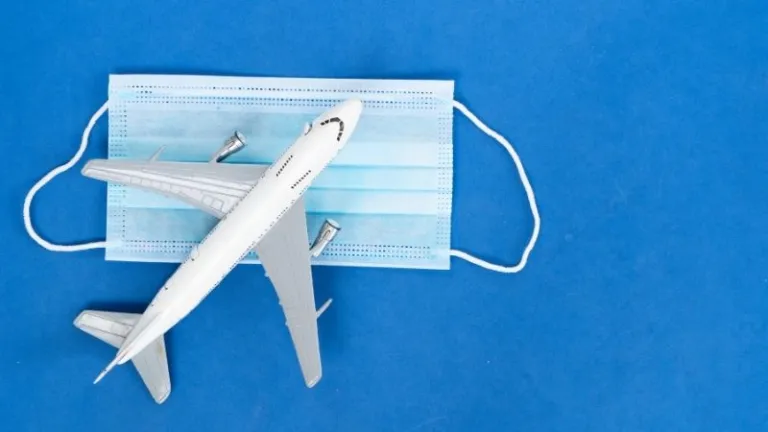
Philippine Airlines
Travel guidelines
Philippine Airlines has put together the following guidelines in response to the COVID-19 pandemic:
- All passengers must bring their own face masks and face shields to use at the airport and throughout the flight.
- Passengers are encouraged to bring their own sanitisers with a maximum content of 70% alcohol.
- Passengers must make sure that their carry-on bags meet the following specifications: maximum dimensions of 56cm x 36 cm x 23 cm, maximum weight of 7kg.
- Online check-in is encouraged.
- Passengers are urged to arrive early at the airport:
- Four hours prior to departure from Manila for international flights
- Three hours prior to departure from Manila and other airports for domestic flights
- Cabin crew will be in full PPE and will practise a simplified in-flight service that minimises contact.
- In-flight meals will be prepared according to Hazard Analysis Critical Control Point procedures and served in sanitised containers or secure packaging.
- Passengers have the option to choose a distancing seat for premium economy class and economy class fares in international flights until 3 Nov 2020.
Refund and rebooking
For Philippine Airlines passengers whose flights have been cancelled or otherwise affected by the ongoing pandemic, the following options are available:
- Convert your ticket fee to a travel voucher and get an additional 10% of your ticket value if you have not made any prior changes to your booking. Requests can be made until 31 Mar 2021.
- Rebook or reroute your ticket for an unlimited number of times, without any rebooking fees. Requests can be made until 31 Mar 2021.
- Refund your ticket without penalties.
Flights
Philippine Airlines is currently operating select domestic and international flights. You can also check Philippine Airlines’ list of flights for the month here.
For everything you need to know about new normal travel with Philippine Airlines, you can visit their page dedicated to their COVID-19 travel updates.
Cebu Pacific
Travel guidelines
Cebu Pacific has put together the following contactless flight guidelines in response to the COVID-19 pandemic:
- Make your bookings online.
- Passengers may only bring one hand-carry baggage with maximum dimensions of 56cm x 36cm x 23cm and maximum weight of 7kg.
- Bring your own personal hand sanitisers not bigger than 100mL.
- Before flying, check all government regulations of your origin and destination, to ensure compliance with their requirements.
- Only water and pre-ordered meals will be available in-flight.
- For convenience, check in to your flight online.
- Be at the airport four hours before departure for international flights and three hours before for domestic flights.
Refund and rebooking
For Cebu Pacific passengers whose flights have been cancelled due to the ongoing pandemic starting 15 Mar 2020, the following options are available:
- Unlimited free rebooking, with travel period within 90 days from the original flight date
- Two-year travel fund
- Full refund
For Cebu Pacific passengers who have voluntarily cancelled their flights between 15 Mar and 30 Nov 2020 due to the ongoing pandemic, the following options are available:
- Unlimited rebooking with waived change fee
- Two-year travel fund
Flights
Cebu Pacific is currently operating select domestic and international flights. You can also check Cebu Pacific’s list of flights for the month here.
For everything you need to know about new normal travel with Cebu Pacific, you can visit their page dedicated to their COVID-19 travel updates.
Which Philippine destinations are open to domestic tourists?
Select Philippine destinations have reopened for domestic tourism. For Philippines COVID-19 travel advisory updates and information on protocols, you can check out the Travel Philippines App.
Boracay

The world-famous island destination reopened to all local travellers on 1 Oct 2020. The following are protocols and requirements listed by the Department of Tourism:
- Those planning to visit Boracay must undergo RT-PCR/swab testing at a licensed lab not earlier than 48 hours prior to travelling. Immediately after testing, travellers are strongly advised to observe strict quarantine until the date of travel. A list of licensed testing labs is available here.
- Travellers must only book their stays in DOT-accredited establishments issued with a Certificate of Authority to Open. A list of establishments is available here.
- Visitors must register their visit online by filling out a health declaration card here. Then, email your HDC, negative result, confirmed flight, confirmed booking, and valid ID to touristboracay@gmail.com with the subject as follows: “OHDC – Family Name, First Name”.
- There will be no age restrictions, although persons with comorbidities will not be permitted to travel to Boracay.
- Godofredo P. Ramos Airport in Caticlan will be the only port of entry for tourists travelling by air.
- Stringent health and safety guidelines, emergency response protocols, and a COVID-19 Laboratory are in place.
- Travellers must book tours through a DOT-accredited tour operator or travel agency.
- Guests must register before swimming in the ocean.
- There will be a strict no face mask, no face shield, no ride policy for PUVs.
- Travellers are reminded to keep their tourist QR codes with them at all times.
- Operating tourist establishments and activities include:
- Restaurants with minimum public health standards
- Swimming in designated swimming areas from 6am to 6pm
- Water sports: Parasailing, kitesurfing, and jet skiing, among others, at reduced capacity
For more information, you may visit the Department of Tourism’s official website.
Also read: Boracay Is Reopening to All PH Tourists Starting 1 October 2020
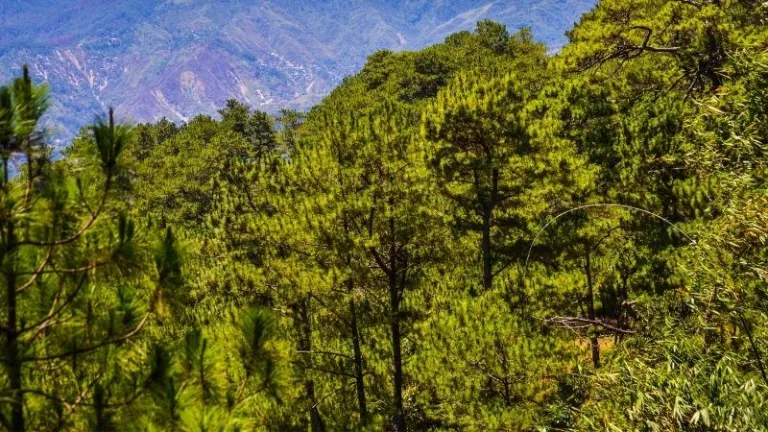
A travel bubble was recently established for and neighbouring provinces from the Ilocos and Cordillera regions in order to gradually reopen local tourism in the area. This travel bubble has since been named the “Ridge and Reef Travel Corridor”, and comprises , La Union, Pangasinan, , and .
Starting 22 Oct 2020, City will open its doors to visitors from the rest of Luzon. This being said, guests from Metro Manila, Cagayan Valley, and Central Luzon will already be allowed to travel to the City of Pines.
The City Tourism office lists the following requirements and protocols for those planning to visit:
- Tourists must pre-register through the Visitior Information and Travel Assistance (VIS.I.T.A.) portal and fill out a health declaration questionnaire, then wait to receive confirmation and QR-coded Tourist Pass.
- Tourists will be required to pre-book their accommodations and itineraries. Booking through a DOT-accredited tour agency is optional, however guests must make reservations with DOT-accredited establishments that have been issued with a Certificate of Authority to Operate.
- Upon entry, tourists will undergo mandatory triage and PCR testing. Necessary costs must be covered by the tourists themselves.
- Visitors must stay in the hotel until their PCR tests are released. Waiting time is nine hours at most.
- Tourists’ movement will be closely monitored by tour operators and/or hotel management.
- Only a maximum of 200 tourists will be allowed entry per day.
- Tourists will not be allowed to visit crowded areas like the City Public Market; entry will also be prohibited in residential areas, with the exception of those with parks.
- Travellers are reminded to keep their tourist QR codes with them at all times.
For more information, you may visit the Public Information Office – City of official Facebook page.
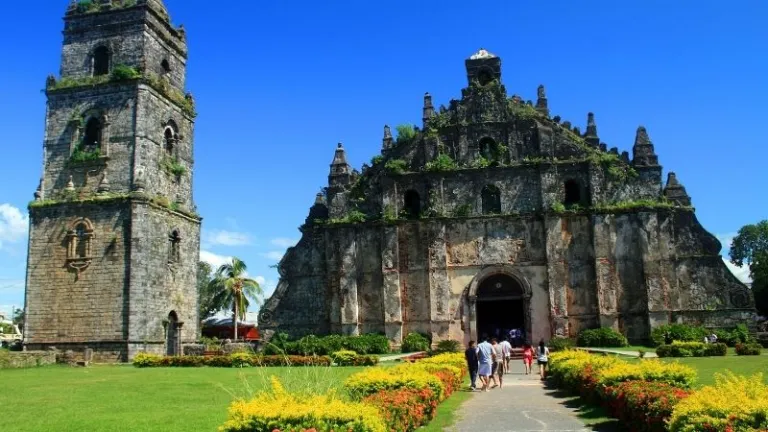
residents may travel for leisure outside of the province, but within the areas covered by the Ridge and Reef Travel Corridor. Starting 15 Oct 2020, opened its doors to tourists from GCQ areas across Luzon.
The Provincial Government of and Tourism have released the following guidelines for travelling in and out of the province:
- Persons not allowed to travel include the following: pregnant women, individuals with existing high-risk health conditions and comorbidities, and children who have medical complexity, neurologic, genetic, metabolic conditions, or who have congenital heart disease.
- The province will only be accepting 50 tourists a day on a first-come, first-served basis.
- Those planning to visit must pre-register here.
- Visitors should have an individual SafePass account for monitoring. This can be requested at request.safp.as or via the SafePass Portal on Facebook Messenger. Save or print a copy of the QR code; this will serve as a digital pass for gateway checkpoints, as well as tourism establishments and services.
- Visitors must present confirmed bookings for their accommodation and tour itinerary. These must be booked only with accredited travel agents or tour operators, as well as accommodation establishments that have been issued a Certificate of Authority to Operate.
- A negative test for COVID-19 is required to be presented. Tourists must undergo RT-PCR testing within the last 72 hours prior to arrival, and are advised to stay at home from the time they are tested until the day of travel.
- If RT-PCR is not available, visitors must take a Rapid Antigen Test within 30 before arrival, and an RT-PCR test upon arrival. Afterwards, they must wait for test results at their hotel.
- If travelling from MGCQ areas, tourists must take an RT-PCR test within 72 hours before travel or a Rapid Antigen test within 30 hours before travel. Upon arrival, they will have to take a Rapid Antigen Test and wait for results before beginning any tours.
- Tourists must present a medical certificate indicating good health.
- Bring all original documents for verification.
- Tourists can only use predetermined safe pit stops along the travel corridor for purposes of stopovers for eating and personal necessities.
- Re-entries to point of origin or home province or town shall be subjected to the LGU’s existing prescribed protocols and requirements. No LGU shall deny their own returning residents of re-entry when entering as positive with COVID-19.
- If test result turns out to be positive, the patient is turned over to healthcare officials. Expenses born out of additional health protocol requirements shall be on the account of the tourist.
- Shopping in crowded areas such as public markets and shops shall be discouraged to tourists. Tour operators or tour guides may assist in the purchase of local goods and souvenirs.
- Public spaces such as parks, beaches, resorts and the like are open, subject to appropriate health protocols and crowd control.
- Tour guides and driver-guides shall serve as safety officers for guests, thus will have the responsibility to ensure that reminders and alerts on required safety protocols are aptly and timely given to guests.
- Anyone who violates this Order shall be penalised under existing applicable laws and ordinances.
For more information, you may visit the Tourism official Facebook page.
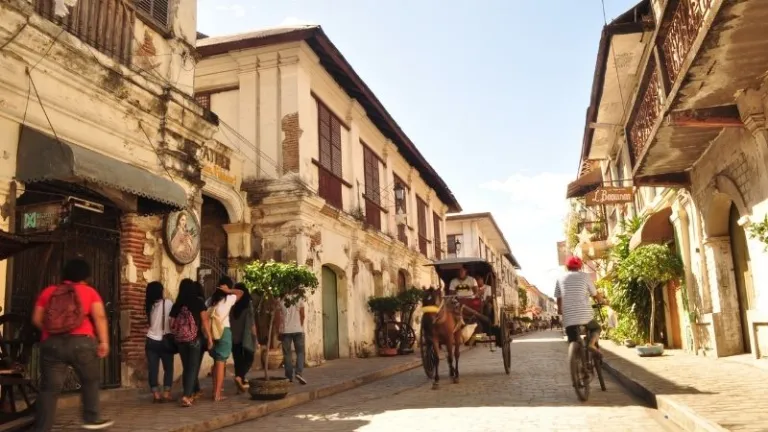
is presently open to tourists from within the Ridge and Reef Travel Corridor. Starting 15 Nov 2020, the province will be accepting visitors from across Luzon, once all systems and health and safety measures are in place.
The Provincial Government of shares the following reminders for travellers:
- Arrange your visit with DOT-accredited tour and travel agents. Preliminary preparations include:
- Explore available DOT-accredited accommodations.
- Explore itinerary and other services offered.
- Learn safety protocols and guidelines for visitors.
- Have yourself tested.
- Visitors are required to present RT-PCR test results issued not more than 48 hours prior.
- Testing methods are subject to DOH advisories and guidelines.
- Test results are valid for a five-day itinerary only.
- Tourists must register and create a QR code using SafePass.
- From your personal mobile phone, visit this link.
- Click on Get Started.
- Enter ‘2’ to request for your SafePass QR code.
- Follow and finish all the instructions.
- Once done, you can request for entry to .
For more information, you may visit the Kapitolyo Ti official Facebook page.
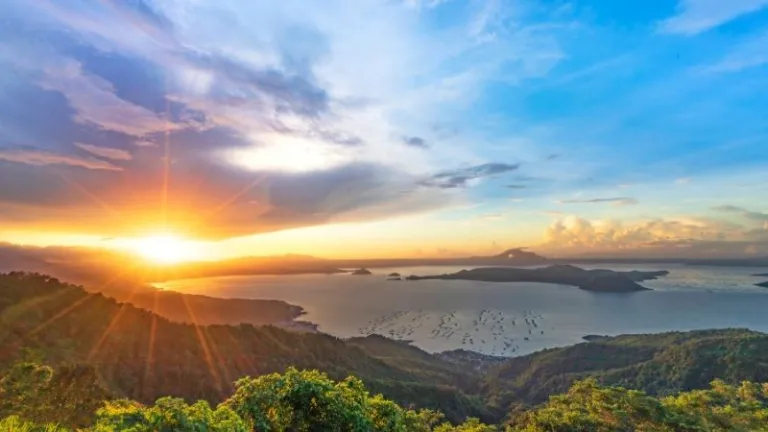
The city of has reopened to tourists from GCQ and MGCQ areas. The following protocols are currently in place:
- Guests must follow minimum health standards, such including proper wearing of face masks and face shields.
- Visitors are not required to present a travel pass. However, they must fill out health declaration forms upon arrival.
- Senior citizens, persons below 21 years of age, and high-risk individuals and/or those with comorbidities are prohibited from entering establishments.
- Hotels and restaurants are allowed to operate at 50% maximum occupancy, with accreditation and certification to operate from the DOT.
Also read: City Reopens to Tourists — Here’s What You Should Know
Batangas
Select tourist sites in Batangas have reopened to domestic tourists from GCQ and MGCQ areas, while others are starting by welcoming visitors who are residents of the province. All tourists are required to adhere strictly to health protocols such as wearing of face masks and face shields, as well as observing physical distancing.
Here is a list of some of the sites that have reopened to domestic tourists from GCQ and MGCQ areas:
- Mt. Daguldol
- Mt. Gulugud Baboy
- National Shrine of Padre Pio.
As of 14 Oct 2020, Batangas is now also accepting guests for recreational diving. Diving activities must be booked with accredited establishments. Guests of all ages are permitted, however those who are pregnant or have comorbidities are strictly off-limits.
The Philippine Commission on Sports Scuba Diving (PCSSD) under the Department of Tourism (DOT) has released the following protocols on diving during the pandemic:
- Divers must present a negative RT-PCR result upon arrival. Tests must be taken within 48 hours prior to arriving at the diving establishment.
- Visitors must bring their own diving gear and disinfectants.
- Divers should observe physical distancing and wearing of face masks when outside of the water. This includes boat rides to and from dive sites.
- Dive boats will be disinfected before and after every use.
- Diving establishments must secure PCSSD accreditation or a DOT Certificate of Authority to Operate before reopening at 50% capacity.
- Establishments must be equipped with defog solutions such as soap and shampoo for divers.
- One-on-one classes are highly recommended for scuba training. Those involved must observe physical distancing.
For more information, you may visit the Department of Tourism’s official website.
Also read: Scuba Diving During COVID-19? Here’s What You Should Know

Palawan is slowly opening for domestic tourism, starting with , where they have started to accept leisure guests at 50% capacity. At the time of writing, operating resorts are limited to Miniloc and Pangulasian Island Resorts. A travel bubble setup has been put in place, allowing local tourists from GCQ or MGCQ areas to fly directly from Manila to .
Resorts lists the following protocols for travel during the pandemic:
- Guests of all ages are accepted, however, those with pre-existing health risks or comorbidities will not be accommodated for the time being.
- Only guests who receive negative results in the RT-PCR test taken 72 hours prior to departure at the accredited health facility will be allowed to join the scheduled flight.
- Tourists must fill up health and travel declaration forms upon reservation.
- Wearing of face masks is mandatory at all times.
- Airport and representatives and tour guides will be in personal protective equipment (PPE).
- Guest health check protocols include foot bath, hand sanitising, and thermal scanning upon arrival.
- The resort shall provide guests with cashless payment options.
- High-touch points like keycards, countertops, handrails, door handles, and the like will be subject to regular disinfection.
- Guest rooms will undergo comprehensive cleaning and sanitation between stays. The housekeeping team will be in proper PPE.
- Additional signage will be provided throughout the resorts in order to remind guests and employees of healthy practices.
- Standard operating procedures will be implemented for employees — these include isolation rooms for quarantine in order to ensure they are in good health before interacting with guests.
For more information, you may visit Resorts’ official website page dedicated to their pandemic-related FAQs.
Coron

Following , tourism in Coron, Palawan will gradually reopen starting 1 Dec 2020. Below are the protocols that travellers must take note of:
- Visitors must be 15 to 65 years old
- Coron is open to Filipino citizens and Philippines-residing foreigners.
- Travellers must only book DOT-accredited hotels, resorts, and tour packages. You can find a list here, or by checking out this website.
- Visitors are required to take an RT-PCR test 48-72 hours before their scheduled flight.
- Travellers must bring the following upon checking in at the airport:
- Negative RT-PCR test
- Round-trip ticket
- Confirmed booking itinerary
- Before coming to Coron, visitors must register at https://corontourism.ph. After registering, guests must fill up a health declaration form and save the generated QR code.
- Upon arrival, all tourists must undergo a health assessment at the triage area at of Franciso Reyes Airport.
- If symptomatic, antigen testing will be necessary; the test is priced at ₱3,500 and the cost will be shouldered by the tourist.
- If positive, the visitor will be sent to a hotel isolation room.
- If negative, you may continue with your itinerary.
- When in Coron, the following are always strictly observed:
- 50% capacity at establishments
- Wearing of face shields and face masks
- Physical distancing
- Frequent hand sanitation
- Arranged reservations are highly encouraged
- 10pm curfew
- Limited movement is strictly enforced
For more information, you may visit the Turismo ng Coron official Facebook page.
Siargao
Siargao is officially reopening for tourism starting 23 Nov 2020, as announced by the Department of Tourism. The province’s two airports in Sayak, Del Carmen and Brgy. Luna, Surigao City will reopen on 1 Dec. Curfew will be enforced from 11pm to 4am daily.
The DOT lists the following protocols and requirements for tourists from outside Surigao del Norte:
- An e-Health Pass with valid ID if arriving via Surigao City or Sayak Airport
- Negative RT-PCR result taken within 48 hours from point of origin. If RT-PCR is taken more than 48 hours prior to arrival, a negative antigen swab will be required on the day of arrival.
- Five-day confirmed booking at a DOT-accredited establishment
- Round-trip ticket or travel details
The following are the requirements for visitors from Surigao del Norte:
- e-Health Pass with valid ID
- Certificate from Barangay Captain that traveller is not a close contact
- Confirmed booking from a DOT-accredited establishment
For more information, you may visit the Department of Tourism’s official website.
Also read: Visiting Siargao Amid the Pandemic as a Tourist? Here’s What You Should Know
Bohol
Starting 15 Dec 2020, Bohol will be open to local tourists of all ages from GCQ and MGCQ areas. The following are the requirements and protocols for those planning to visit the province:
- Visitors must pre-book their hotels, transportation, and tours with DOT-accredited establishments that have been given the Ultimate Bohol Experience (UBE) seal.
- Tourists will be required to submit a negative RT-PCR test result taken 72 hours prior to their departure.
- Before visiting, tourists must register online via the My Bohol Tourist Card website. Once their tourist application is approved, each visitor will be given a unique QR code. This will be needed for entry into Bohol’s establishments and destinations.
- Minimum health standards such as wearing of face shields, face masks, social distancing, and frequent hand sanitation will be in place
For more information, you may visit the Philippines.Travel app.
How can domestic tourists apply for the RT-PCR test subsidy?
Made possible by the Tourism Promotions Board, the Department of Tourism has partnered with the University of the Philippines – Philippine General Hospital (UP-PGH) in order to provide domestic tourists with a 50% subsidy for RT-PCR tests. The hospital offers the test at a full price of ₱1,800.
To qualify, the DOT advises tourists of the following guidelines:
- The tourist must register online five days before the intended travel date and indicate a destination that has been declared open to leisure tourists.
- Tourists must submit the following:
- Government-issued IDs
- Confirmed and paid hotel booking voucher
- Round-trip transportation tickets if applicable (airline/bus tickets)
- UP-PGH can only accommodate 100 RT-PCR tests per day, so applications will be evaluated on a first-come, first-served basis.
Below are the necessary steps for those interested in applying for the subsidy:
- Log on to this link and submit an application.
- Wait to be informed on the status of your application.
- If approved, your application will be forwarded to UP-PGH and you will receive a confirmatory email.
- Fill up the Client Investigation Form (CIF), which you can find here.
- UP-PGH will notify you of your swab test schedule via email.
- Take your swab test on the scheduled date.
- Wait to receive your test results. These will be emailed to you within 24 hours.
Also read: Filipino Tourists Can Now Apply for a 50% RT-PCR Test Subsidy for Safer Travels
Are staycations allowed in the Philippines?
Staycations are allowed, provided that hotels have been accredited by the DOT and have been cleared to host leisure guests. Hotels operating as quarantine facilities are strictly prohibited from accepting guests for staycations.
Also read: New Normal Staycations in Metro Manila Only Allowed in Accredited Hotels
What are the protocols for staycations in GCQ areas?
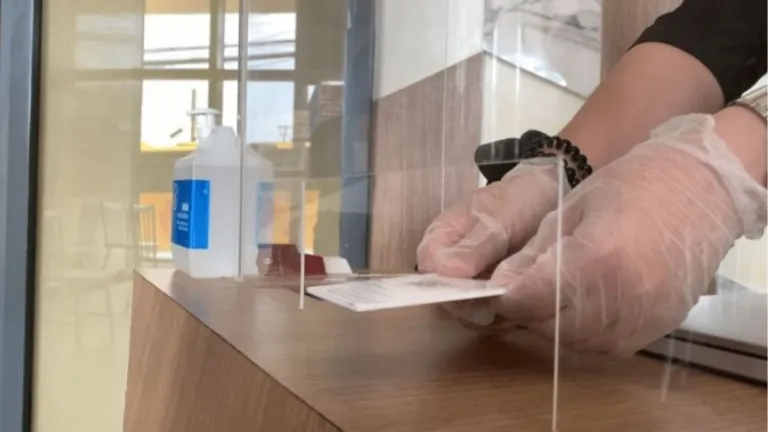
The Department of Tourism has already released the guidelines for staycations. They include the following:
- Guests will be required to present a negative rapid antigen test for COVID-19 on the same day of check-in.
- Hotels must receive a Certificate of Authority to Operate for Staycations from the Department of Tourism.
- Guests of all ages are welcome, however, those with comorbidities or who are currently pregnant will not be granted entry.
- Hotel guests may only book staycations in the same province as their residence. In this case, NCR will be considered a province.
- There will be a maximum number of guests per room floor area:
- Up to 20 sqm: one person, or two persons from the same household
- 21-29 sqm: two persons
- 30-39 sqm: three persons
- 40-49 sqm: four persons
- 50sqm and above: five persons
- Hotels must provide guests with contactless payment options.
- Safety protocols and minimum health standards must be observed at all times.
- Hotel restaurants, gyms, swimming pools, and other facilities will be allowed to operate, subject to health and safety guidelines by the DOT.
- Guests must present proof of residency, such as a government or company ID with residential address.
For more information, you may refer to the complete list of guidelines in the Department of Tourism’s official Facebook Page.
Is land travel allowed within the Philippines?
Yes, land travel is allowed between GCQ and MGCQ areas. Depending on your destination and mode of transportation, you may need to acquire a travel authority pass. Those travelling via private vehicles must still wear masks and follow physical distancing measures. Provincial bus routes between Metro Manila and select areas have also reopened.
Which provincial bus routes have reopened?
A total of 12 provincial bus routes between Metro Manila and Central Luzon and Calabarzon are now up and running. As of writing, buses may only board and unload passengers at two designated terminals: Araneta Center in Cubao and Parañaque Integrated Terminal Exchange (PITx). The operating provincial bus routes include the following:
- San Fernando, Pampanga – Araneta Center
- Batangas City, Batangas – PITx
- Lemery, Batangas – PITx
- Lipa City, Batangas – PITx
- Nasugbu, Batangas – PITx
- Indang, Cavite – PITx
- Mendez, Cavite – PITx
- City, Cavite – PITx
- Ternate, Cavite – PITx
- Calamba City, Laguna – PITx
- Siniloan, Laguna – PITx
- Sta. Cruz, Laguna – PITx
What are the protocols in place at operating buses?

The Land Transportation Franchising and Regulatory Board (LTFRB) has listed the following protocols for land travel via bus:
- To be able to board, passengers are required to bring the following documents:
- Valid ID that includes passenger’s information such as his/her address or place of origin, age, and place of work/study
- Travel authority or pass from the PNP at the passenger’s terminal of origin
- Written consent to undergo COVID-19 testing if required by the LGU
- Any other documents that may be required by IATF-EID and LGU
- Everyone onboard must strictly follow health protocols such as wearing of face masks and face shields, and maintaining one metre physical distancing.
- Eating, drinking, use of mobile phones, and talking to other passengers are not allowed inside the bus.
- Passengers must secure their tickets two days before the trip, unless travelling for an emergency.
- All public utility buses are required to undergo thorough disinfection and sanitation before and after each trip.
- Fares will be retained at pre-pandemic levels.
For more information, you may visit the Land Transportation Franchising and Regulatory Board – LTFRB’s official Facebook page.
Reminders
Be reminded that despite the easing of quarantine restrictions, the best thing you can do during this time is still to stay at home and travel only when necessary.
In the event that you do end up travelling during the pandemic, make sure to be guided by the necessary travel protocols at your point of origin, as well as at your destination. Stay informed about the latest updates and always follow minimum health standards such as wearing a face mask and face shield, keeping a safe distance, and being equipped with hand sanitisers.
Also read: A Letter to Pinoys — Do NOT Travel Unless Necessary
Official Philippine COVID-19 & government resources
COVID-19 Dashboard
- Official website: https://www.covid19.gov.ph
Department of Tourism
- Official Philippines.Travel website: https://philippines.travel/safeph
- Official website: http://www.tourism.gov.ph
- Official Facebook page: https://www.facebook.com/DepartmentOfTourism
Department of Health
- Official website: https://www.doh.gov.ph
- Official Facebook page: https://www.facebook.com/OfficialDOHgov
Department of Foreign Affairs
- Official website: https://www.dfa.gov.ph
- Official Facebook page: https://www.facebook.com/dfaphl
Bureau of Immigration
- Official website: https://www.immigration.gov.ph
- Official Facebook page: https://www.facebook.com/officialbureauofimmigration
This Philippines COVID-19 travel advisory will continue to be updated with the latest information.
Published at
About Author
Subscribe our Newsletter
Get our weekly tips and travel news!
Recommended Articles
10 Bantayan Island Resorts, Hotels, and Rentals for Your Tropical Escape 10 Best Banawe Restaurants for a Mouthwatering Food Trip in QC The promise of new flavours beckons from Banawe.
10 Best Mountain Cafes in the Philippines for Your Peak Coffee Experience Coffee date on the mountains, anyone?
10 Commandments for Responsible Travel Flexing Spread the good word!
10 Family Outing Ideas in Metro Manila Under ₱500 Looking for a weekend bonding with the family under ₱500? Head to these places, pronto!
Latest Articles
Dingalan Travel Guide: Nature Spots to Discover Now Underrated coastal gem in Aurora
What to Eat in Bicol: Iconic Dishes and Treats, and Unique Pasalubong You’ll Love Spice up your foodie adventure with iconic Bicol dishes and must-try pasalubong!
Top Travel Trends in the Philippines for 2025 New spots, tips, and trends
New UK Adventure Park to Visit in Devon and Cornwall Fun countryside escape near London
Ultimate Camarines Norte Travel Guide: Waterfalls, Beaches, and More From surfing to secret waterfalls, Camarines Norte is your next escape!

